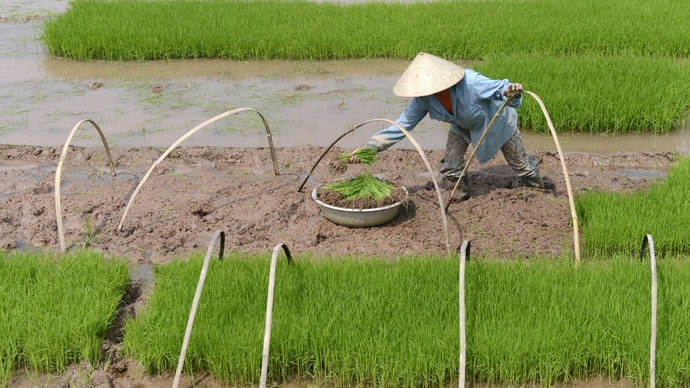
Tech & Sci
13:19, 10-Oct-2017
UN: Rising world hunger requires rural rethink
CGTN

A sudden rise in hunger across the globe will require a new emphasis on developing rural economies, the United Nations said on Monday.
After steadily declining for a decade, 2016 saw an increase in hunger, with 815 million people, or 11 percent of the world's population, chronically undernourished.

A displaced Somali child is sitting at a makeshift camp in the Garasbaley area on the outskirts of the capital Mogadishu. /AFP Photo
A displaced Somali child is sitting at a makeshift camp in the Garasbaley area on the outskirts of the capital Mogadishu. /AFP Photo
That represents an increase of 38 million on the previous year, said the UN, due in part to climate change aggravating severe weather and conflicts.
But a report by the UN Food and Agriculture Organization (FAO) said stimulating growth in rural areas could be the key to fight the trend and reach the goal set by the international community of eliminating hunger and poverty by 2030.

A farmer is planting rice on a field in the picture. World starvation as farmers struggle to feed 9.6 billion people by 2050. /AFP Photo
A farmer is planting rice on a field in the picture. World starvation as farmers struggle to feed 9.6 billion people by 2050. /AFP Photo
"There could be no clearer wake-up call," the FAO said in the annual State of Food and Agriculture report.
"With the majority of the world's poor and hungry living in these areas, achieving the 2030 development agenda will hinge on unlocking that oft-neglected potential," the report said.
The affected countries are mainly in Asia and sub-Saharan Africa, where small-scale farmers who produce 80 percent of the food supply are in danger of being "left behind," the report said.

Global hunger /AFP Photo
Global hunger /AFP Photo
"Investments to improve their productivity are urgently needed," said the report, emphasizing that farming needs to be connected with small- and medium-sized cities.
Source(s): AFP

SITEMAP
Copyright © 2018 CGTN. Beijing ICP prepared NO.16065310-3
Copyright © 2018 CGTN. Beijing ICP prepared NO.16065310-3